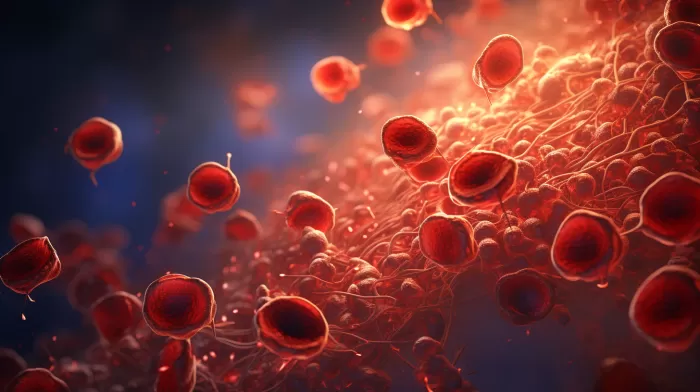When most of us picture a heart attack, we think of our heart squeezing, gripping our chest, and possibly even an ambulance whisking us to the hospital for emergency treatment.
Yet, the truth is most of us don’t actually understand what happens inside our bodies during an attack. And it may surprise you to know, that even doctors and cardiovascular researchers weren’t actually sure either…
Until now.
Now, thanks to a brand-new study, not only do can we better understand the mechanism behind a heart attack, we also have a new clue as to a possible driving force — one we could even take steps to counteract to save lives.
What causes a heart attack?
You see, it’s been long understood that when you have a heart attack, it’s because somehow blood flow to your heart has become cut off, either due to a blockage or a narrowing of your coronary arteries (the vessels that feed your heart). When this happens, your heart can’t get the blood supply and with it, the oxygen it needs to live and function.
And causes of blockages of your heart are arterial deposits — known as plaque — that lead to blood clots, which can detach and float off to block those coronary arteries.
Now, while it might seem that all of this information means we know everything we need to know. But hold on to your hat, because here is where things get tricky.
What triggers the formation of blood clots — and thus the subsequent heart attack — is what no one, including the doctors you rely on, truly knew for sure.
In fact, for the longest time, the medical community has believed that these blood clots were exclusively caused by damage to the fibrous cap of your blood vessels. They thought that only when that connective tissue layer which surrounds the deposit ruptured was a blood clot formed that leads to heart attack.
But that new study we were talking about by researchers from Charité – Universitätsmedizin Berlin and the German Centre for Cardiovascular Research has now proven that’s not the case.
Instead, they’ve found that there’s another mechanism that’s responsible for a whopping 25 percent of the clots that cause heart attacks…
Your body’s own immune cells.
Activated immune cells and inflammation
The team investigated a total of 170 patients with acute coronary syndrome (a fancier term for heart attack) and found that the fibrous cap of your blood vessels does not have to be disturbed in order for a heart attack causing a clot to break loose.
Instead, in 25 percent of patients, they discovered that all it takes is for your body to have sent in activated immune cells — known as T-lymphocytes — into the interior walls of your arteries.
This then cascades, eroding the plaques lining the vessels, resulting in debris in your blood, and artery-blocking clots that trigger a heart attack.
Basically, thanks to changes in the blood flow of your arteries, your immune system goes on the attack, amping up inflammation and actually causing your heart attack.
The researchers call it a “misguided adaptive immune response.”
Did anyone just read that as an autoimmune problem?
So did I!
In other words, just like when you have an autoimmune disease such as multiple sclerosis, lupus, or Hashimoto’s thyroiditis, your own immune system is the cause of your health problems, because it’s attacking your body and sending your inflammation levels through the roof.
The silver lining
While that may all sound like bad news, there’s good in knowing this information if you understand where to look.
By this, I mean that it’s possible that like with other health conditions where your immune system becomes your enemy, that finding ways to limit inflammation could help reduce your risk of heart attack.
So, how do you do this?
#1 — Try healthy oils
The first thing you can do is to increase your omega-3 intake. These oils found in fatty fish like salmon and tuna, as well as other sources like flaxseeds, walnuts, and olive oil are one of the easiest ways to curb the fires of inflammation.
#2 — Eat an anti-inflammatory diet
Next, focus on revamping your eating patterns.
Eliminate or at least limit your intake of refined carbs and sugars and fast food, while upping the amounts of fresh fruits and veggies, whole grains, beans, lentils, and nuts you eat.
#3 — Stay active
Exercise is vital to combating inflammation. Focus on activities that keep your blood moving and your joints flexible. This can include walking, swimming, yoga, Pilates, and more.
#4 — Get your rest
High-quality sleep helps your body rest and repair while reducing inflammation. Practice good sleep habits and shoot for at least seven to eight hours of rest per night.
Remember, your own immune system and the inflammation its overactive cells can cause could raise your risk for a heart attack. Take steps now to limit inflammation to keep your immune response and your heart on the track to better long-term health.
Sources:
6 Ways to Reduce Inflammation — Advanced Health
Tracking down the causes of heart attack — EurekAlert!



